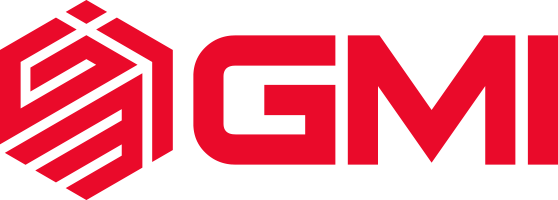Federal E-rate
Program
IMPROVE ACCESS TO TECHNOLOGY
We can help your district maximize your E-Rate funding
E-Rate, also known as the Universal Service Schools and Libraries Program, is a federally-funded program that provides eligible schools and libraries with discounts of 20%-90% on telecommunications and internet services.
We are experts in navigating the E-Rate process, with 25 years of experience working with over 100 school districts to build a technology plan and then implement that plan once funding is secured. We believe a successful E-Rate program begins with thoughtful planning before even the first application is filed and are here to work with you at every step of the process.
Our e-rate experts can help:
- determine the level of funding allocated to your district
- engineer your network solution for your technology plan
- walk you through how to receive your funding
help maximize your E-Rate funding through compliance and accurate record-keeping
EXPERIENCE YOU CAN TRUST
WHY GMI?
25 YEARS
SCHOOL TECHNOLOGY EXPERIENCE
100+
SCHOOL DISTRICTS SERVED
How We Can Help
PRE-APPLICATION TECHNOLOGY PLAN
During our free consultations, we learn about your district's needs and provide potential solutions to build your technology plan.
PREFERRED VENDOR PRICING
Based on your technology plan, we can secure special vendor pricing to ensure you are getting the most out of your funding.
TOTAL SOLUTIONS PROVIDER
In addition to implementation of your technology plan, we offer a full suite of services to meet your additional IT needs including managed services.
Connect with an
E-Rate expert today.
Start putting our 25 years of E-Rate experience with over 100 school districts to work for your school district today.
Navigating the E-Rate Process
E-rate Overview
E-Rate is the largest technology-related funding available to public schools and libraries. $3.9 Billion is released annually by the FCC to close the technology gaps in education and learning needs. In 2020, the FCC increased the E-Rate funding, creating an opportunity for school districts to upgrade their network infrastructure to better support their population and network to meet the needs of today and the future of learning.
This year, the E-Rate program has been updated to maximize eligibility to include options for Fiber-optic internet and other powerful Wi-Fi options to avoid any lags in learning and empower more students, teachers, parents and communities.
Determining E-rate Eligibility
School districts, charter schools and libraries are eligible for e-rate funding. School districts and libraries are required to apply annually for eligible and needed services.
DEFINITION OF A SCHOOL
To be a qualifying school, the school must meet the statutory definition as noted in the No Child Left Behind Act of 2001.
An elementary school is a non-profit institutional day or residential school, including a public elementary charter school, that provides elementary education, as determined by state law.
A secondary school is a non-profit institutional day or residential school, including a public secondary charter school, that provides secondary education, as determined under state law, except that such term does not include any education beyond grade 12.
*Schools operating at for-profit or have endowments exceeding $50 million are not eligible.
DEFINITION OF A LIBRARY
Libraries must meet the statutory definition of a library as defined by the Library Services and Technology Act of 1996.
A library is a public library, a public elementary school or secondary school library, an academic library, a research library that publicly makes available services and material and is not an integral part of a higher education institute, or a private library only if the state determines it is a library.
Calculating Your E-rate Discount
Monies available are based on the districts National School Lunch Program percentage. Your district’s funding and discount eligibility are dependent on your student population and how many of your students are eligible for free and reduced lunch. For example, if you are a school district that has 0 students on free and reduced lunch, you are still eligible for the minimum discount of 20%.
Click here to calculate your lunch program percentage.
Eligible E-rate Services
Click here to download our E-rate solutions one-pager.
CATEGORY ONE: DATA TRANSMISSION AND/OR INTERNET ACCESS
Category One includes the services needed to support broadband connectivity:
- Asynchronous Transfer Mode (ATM)
- Broadband over Power Lines
- Cable Modem
- Digital Subscriber Line (DSL)
- DS-1 (T-1), DS-3 (T-3), and Fractional T-1 or T-3
- Ethernet
- Integrated Services Digital Network (ISDN) o Note: Dedicated voice channels on an ISDN circuit are no longer eligible.
- Leased Lit Fiber
- Leased Dark Fiber (including dark fiber indefeasible rights of use (IRUs) for a set term)
- Self-Provisioned Broadband Networks (applicant owned and operated networks)
- Frame Relay
- Multi-Protocol Label Switching (MPLS)
- OC-1, OC-3, OC-12, OC-n
- Satellite
- Switched Multimegabit Data Service Federal Communications Commission DA 19-1249 5 · Telephone dial-up
- Wireless (e.g., microwave)
CATEGORY TWO: ELIGIBLE BROADBAND INTERNAL CONNECTIONS
Category Two includes the internal connections needed for broadband connectivity:
- Antennas, connectors, and related components used for internal broadband connections
- Cabling
- Caching
- Firewall services and firewall components separate from basic firewall protection provided as a standard component of a vendor’s Internet access service
- Racks
- Routers
- Switches
- Uninterruptible Power Supply (UPS)/Battery Backup
- Access points used in a local area network (LAN) or wireless local area network (WLAN) environment (such as wireless access points)
- Wireless controller systems
